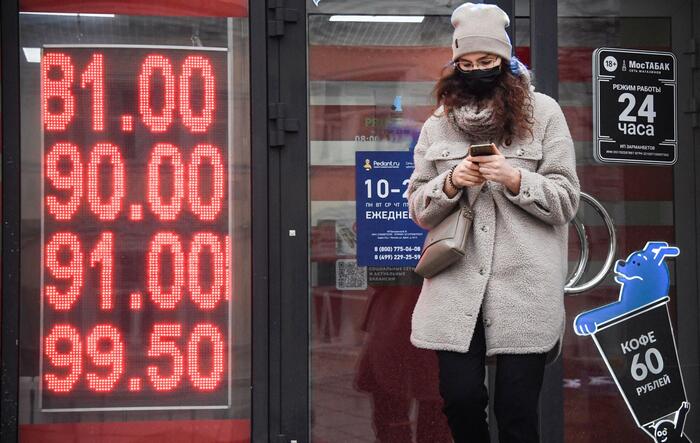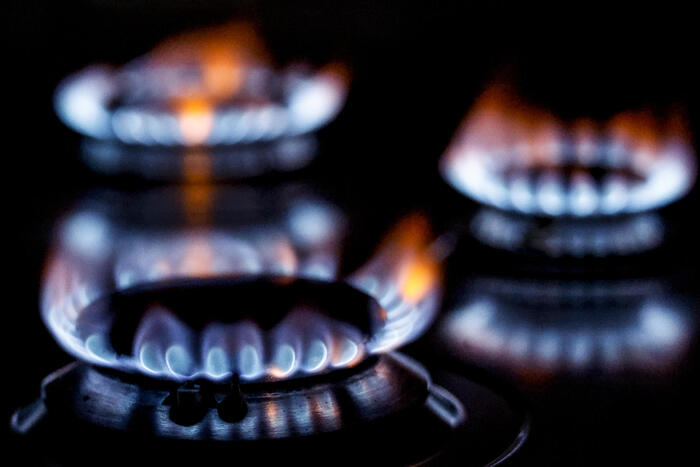The European stock exchanges continue the session well in tune on the road to the upside
.
The Stoxx 600 accelerates up by 2%, with analysts assessing the impact of sanctions on Russia as lower than initial forecasts.
In particular, the assessments of the operators concern the energy sector.
Meanwhile, gas has undergone a sharp contraction (-24%) in Europe and oil has reversed course after the jump on the eve of the day.
In the Old Continent, London (+ 2.1%), Milan (+ 1.9%), Paris (+ 1.7%), Frankfurt and Madrid (+ 1.6%) continue in positive ground.
The drop in gas gave utility companies wings (+ 4.8%).
The price of oil continues to rise.
WTI rises to 94.16 dollars per barrel (+ 1.4%) and Brent to 100.86 dollars (+ 1.8%).
Among commodities, gold fell by 3% to 1,911 dollars an ounce.
On the currency front, the euro drops to 1.1186 in London.
The
indexes of the Moscow Exchange raise their heads
with a leap forward, after the collapse of the eve with the start of military operations in Ukraine and the announcement of sanctions by the international community.
The benchmark Moex index is up 14.44%, after yesterday's 33% drop.
The RTS index in dollars gains 25.38%, after the 38% decline on the eve.
On the currency front, the ruble is recovering against the dollar and the euro.
the exchange rate between the dollar and the ruble fell to 83.05, after yesterday's high, reaching 90. The trading between the euro and the ruble fell to 93.02, after yesterday's high at 101.03.
The European stock exchanges start the session with a sharp rise
, after the crash of the eve of the invasion of Ukraine by Russia.
Investors are evaluating the sanctions decided by the international community against Russia, considered to be less strong than expected.
Spotlights also focused on raw materials with the price of gas and oil.
The Ukrainian crisis continues to push oil prices which show a new upward trend, albeit less strong than the flare-ups of the eve.
The reference WTI crude oil gained 1.92%
and returned to rise towards 95 dollars a barrel at 94.54 dollars.
Brent also rose and changed hands at 101.15 dollars a barrel (+ 2.09%).
Yesterday North Sea oil reached a record price of $ 105.79 per barrel since August 2014;
the WTI of Texas had reached $ 100.
Start of
falling gas negotiations in Europe
, after the jump on the eve of the fears of the impact of the invasion of Russia in Ukraine and the sanctions of the international community in Moscow.
In Amsterdam, prices fell by 16.6% to 112 euros per MWh, compared to 134 euros at yesterday's closing.
The
price of wheat has jumped to a high since 2008 on the Chicago Stock Exchange in the
wake of the crisis in Ukraine.
According to data reported by the Bloomberg agency, the price of futures rose to $ 9.60 per bushel (bushel) and then fell slightly again.
The
Asian stock exchanges closed with a sharp rise
after the crash of the eve of Russia's attack on Ukraine.
Investors assess the impact of the global conflict and the international community's sanctions on Russia.
Closing in sharp rise for Tokyo (+ 1.95%).
On the foreign exchange market, the yen continues its revaluation phase against the dollar at 115.20, and has changed little against the euro at 129.20.
With negotiations still in progress Shanghai (+ 0.61%), Shenzhen (+ 1.26%), Seoul (+ 1.06%), Mumbai (+ 2.62%) are also on the rise.
In contrast Hong Kong (-0.59%).
The lists are supported by the performance of the technology sector.
On the macroeconomic front, the data on business and consumer confidence in Italy and the Eurozone are on the way.
Final GDP for the fourth quarter is forecast from Germany and France.
The data on the
inflation and consumption.
From the United States, orders for durable goods, consumption data and consumer confidence.
The Central Bank of China (PBOC) has made the largest weekly liquidity injection since January 2020 to keep liquidity in the markets at an adequate level also in view of the end-of-month maturities.
Today's intervention, a note reads, was 300 billion yuan (47.41 billion dollars) in the form of a 7-day reverse repo, compared to 10 billion in maturity.
In the whole week, the net liquidity injected stood at 760 billion yuan (about 120 billion dollars).





